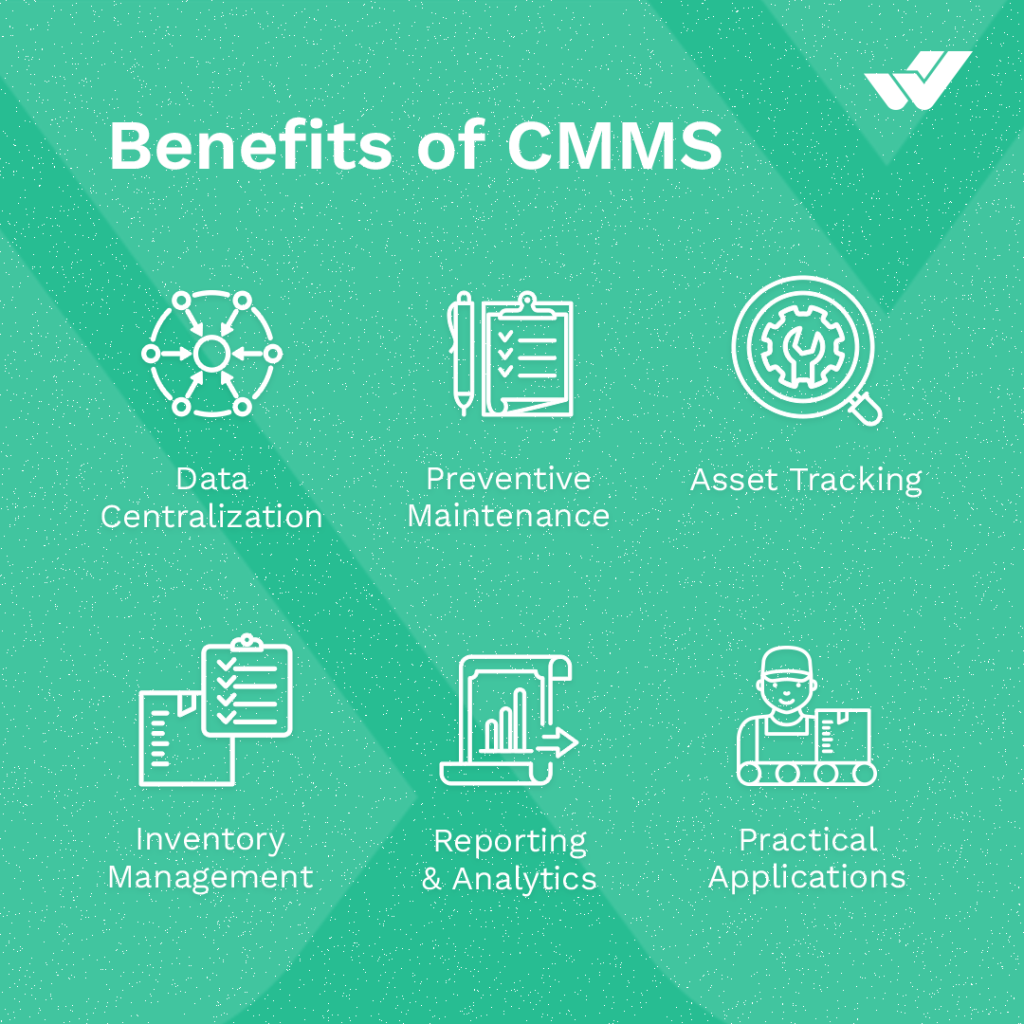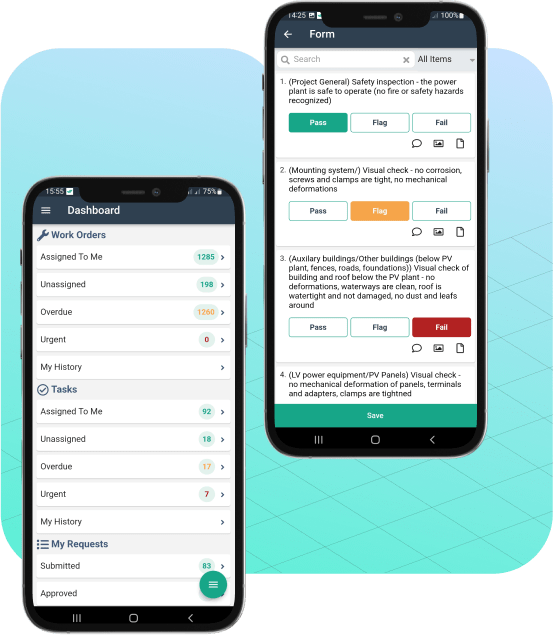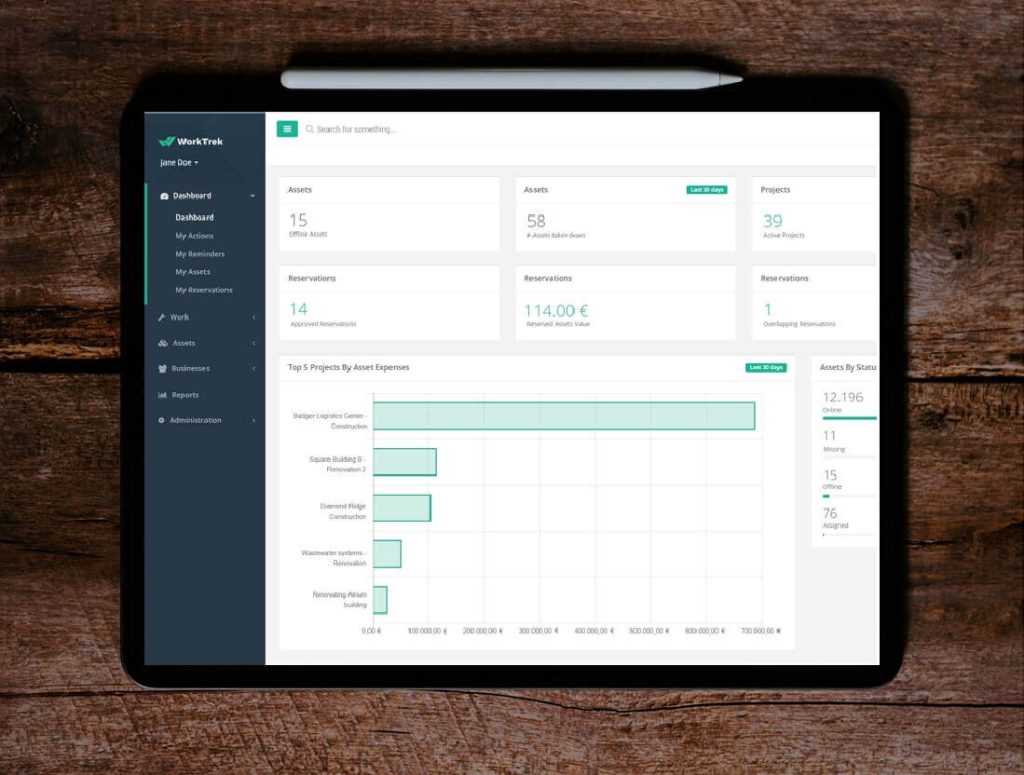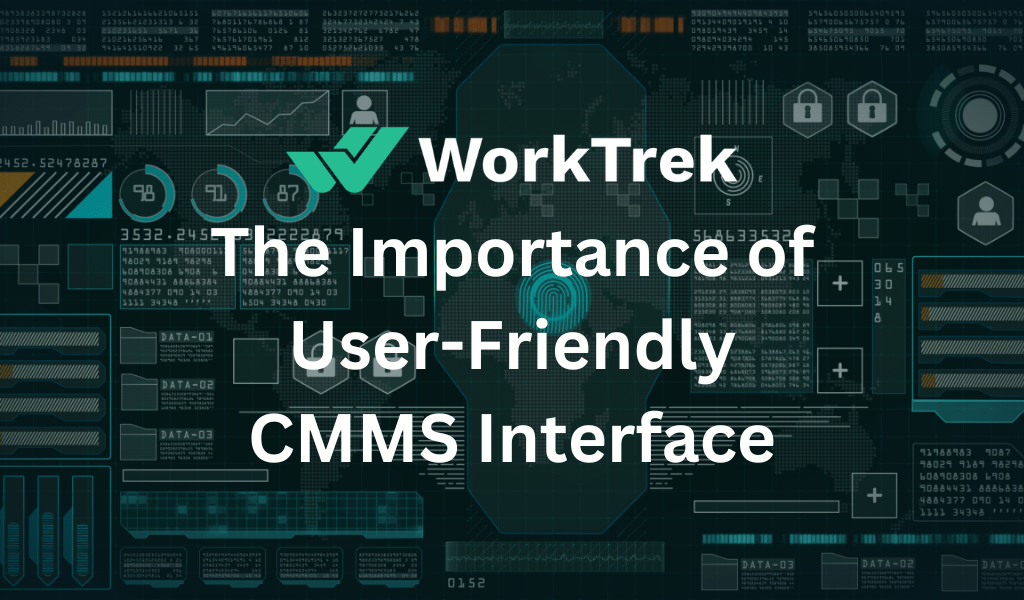Get a Free WorkTrek Demo
Let's show you how WorkTrek can help you optimize your maintenance operation.
Try for freeIntroduction
CMMS is a powerful software solution that simplifies and improves the management of maintenance tasks, equipment, and facilities. It enables companies to transition from traditional paper-based systems to a digital platform that provides comprehensive control, tracking, and optimization of maintenance operations.
While a CMMS system is an extremely powerful maintenance management tool, its effectiveness largely depends on its ease of use. Choosing user-friendly CMMS software is more than just a matter of convenience; it’s a strategic decision that can impact your organization’s bottom line. A complex and difficult-to-operate CMMS system can lead to user resistance, low adoption rates, and costly implementation delays.
Why is CMMS Software Important?
CMMS is important as it helps companies plan, schedule, and track maintenance activities effectively, thereby increasing maintenance efficiency and saving costs. CMMS systems centralize maintenance data and provide real-time information, helping companies make informed decisions, reduce downtime, and extend the life of equipment. Additionally, CMMS systems can automate maintenance processes, minimize human errors, and improve communication among maintenance teams, resulting in better maintenance practices and higher equipment reliability.

The Importance of User-Friendly CMMS Software
The importance of user-friendly CMMS software cannot be overstated, as it directly impacts the effectiveness of maintenance operations and overall organizational efficiency. Here are several key reasons highlighting the significance of user-friendly CMMS software:
- Ease of Adoption: User-friendly CMMS software is easier for personnel at all levels to adopt. When the software is intuitive and straightforward, there’s a reduced learning curve for new users, making the onboarding process smoother.
- Increased Productivity: Intuitive design and easy navigation contribute to increased productivity. Maintenance teams can quickly and efficiently perform tasks such as creating work orders, updating asset information, and generating reports without unnecessary complications.
- Better Decision-Making: User-friendly CMMS software provides easy access to relevant information and reports. Maintenance managers can make informed decisions based on real-time data, historical information, and performance trends, contributing to more effective maintenance strategies.
- Reduced Training Costs: Training costs are lowered when the software is user-friendly. Personnel can quickly grasp how to use the system, reducing the need for extensive training sessions and associated expenses.
- Enhanced Collaboration: User-friendly CMMS software often includes collaboration features, such as communication tools and shared workspaces. This fosters better communication and collaboration among team members, improving overall teamwork.

What is a CMMS Interface?
A CMMS interface refers to the user interface (UI) or graphical user interface (GUI) of a CMMS. A CMMS is a software designed to streamline and optimize maintenance management processes within an organization. It helps manage work orders, track equipment and asset maintenance, schedule preventive maintenance tasks, manage inventory, and generate reports.
The CMMS interface provides users with a visual way to interact with the software and perform various maintenance-related tasks. The interface typically includes menus, buttons, forms, and other elements that allow users to input data, retrieve information, and navigate through the different features of the CMMS.
The key components and features of a CMMS interface may include:
- Dashboard: A summary view of key performance indicators, upcoming maintenance tasks, and other relevant information.
- Work Order Management: A section for creating, assigning, and tracking work orders for maintenance tasks.
- Asset Management: Tools for managing and tracking equipment, machinery, and other assets, including their maintenance history.
- Preventive Maintenance: Functionality for scheduling and managing routine maintenance tasks to prevent equipment failures.
- Inventory Management: A module for tracking and managing spare parts, supplies, and inventory related to maintenance activities.
- Reporting: Tools for generating reports on maintenance performance, costs, and other relevant metrics.
The goal of a well-designed CMMS interface is to make it easy for maintenance professionals to input and access information, track maintenance activities, and make informed decisions to improve overall equipment reliability and reduce downtime. The interface should be intuitive, and user-friendly, and provide efficient workflows for the various tasks involved in maintenance management.

Importance of User-Friendly Mobile CMMS Solution
A User-Friendly Mobile CMMS solution is essential for various reasons, especially in industries where maintenance management plays a crucial role. Here are some key reasons highlighting the importance of a user-friendly mobile CMMS:
- Accessibility and Mobility: A mobile CMMS allows maintenance personnel to access critical information and perform tasks from anywhere at any time. This mobility is particularly important for field technicians who need to manage and execute maintenance activities on the go.
- Efficient Work Execution: User-friendly mobile interfaces enable technicians to quickly and efficiently perform tasks such as creating work orders, updating maintenance records, and accessing equipment information. This efficiency is vital in minimizing downtime and ensuring the timely completion of maintenance activities.
- Improved Communication: User-friendly mobile CMMS solutions often include communication features, such as messaging and notifications. This helps in enhancing communication between team members, ensuring that everyone is informed about maintenance tasks, updates, and changes.
- Enhanced User Adoption: Technicians are more likely to embrace and use a mobile CMMS if it is user-friendly. An intuitive interface reduces the learning curve, making it easier for users to adapt to the new system and incorporate it into their daily routines.
- Remote Monitoring: Mobile CMMS solutions can provide remote monitoring capabilities, allowing maintenance teams to monitor equipment status and performance even when they are not physically on-site. This proactive approach helps in identifying issues before they lead to major breakdowns.

Why is UX so Important for CMMS?
User Experience (UX) is crucial for CMMS for several reasons:
- User Adoption: A positive user experience increases the likelihood of user adoption. If the CMMS is easy to use, intuitive, and efficient, maintenance staff are more likely to embrace and use the system regularly. This, in turn, enhances the effectiveness of maintenance processes and data accuracy.
- Efficiency and Productivity: A well-designed UX can streamline workflows, making it faster and more straightforward for users to perform tasks such as creating work orders, updating maintenance records, or generating reports. This efficiency can result in time savings and increased productivity for maintenance teams.
- Reduced Training Time: An intuitive and user-friendly interface reduces the learning curve for new users. Maintenance staff can quickly understand how to navigate the system, input data, and use various features without extensive training. This is particularly important in environments where staff turnover is common.
- Better Decision-Making: A well-designed UX provides easy access to relevant information and reports. Maintenance managers can make informed decisions based on real-time data, trends, and historical information. This contributes to more effective maintenance strategies and resource allocation.
- Employee Satisfaction: A positive user experience contributes to overall employee satisfaction. When users find the CMMS easy to use and helpful in their daily tasks, it can improve job satisfaction and morale within the maintenance team.
- Adaptability to Change: In dynamic work environments, maintenance processes and requirements may change. A flexible and user-friendly CMMS allows for easier adaptation to changes in workflows, new equipment, or evolving maintenance practices.
- A positive UX for CMMS contributes to user satisfaction, adoption, efficiency, and data accuracy. It plays a crucial role in the successful implementation and ongoing use of a CMMS within an organization, ultimately supporting effective maintenance management and asset reliability.
Evaluating of User-Friendly CMMS Interface
When evaluating the user-friendliness of a CMMS interface, consider the following criteria to ensure that the system meets the needs of your organization and users:
- Intuitiveness: The interface should be intuitive, allowing users to easily understand and navigate the system without extensive training. Menus, icons, and terminology should be self-explanatory.
- Navigation: Assess the ease of navigation within the CMMS. Users should be able to move between different modules and features effortlessly, with a logical and consistent layout.
- Workflow Efficiency: Evaluate how efficiently users can perform common tasks within the CMMS. The system should support streamlined workflows, minimizing the number of clicks or steps required to complete essential tasks.
- Customization: Consider the level of customization the CMMS interface offers. Users should have the ability to personalize their dashboards, reports, and views based on their specific roles and preferences.
- Mobile Responsiveness: If the CMMS has a mobile component, evaluate its responsiveness and usability on different devices. A mobile-friendly design is crucial for users who need to access the system on the go.
- Accessibility: Ensure that the CMMS interface is accessible to users with diverse abilities. Look for features such as keyboard shortcuts, screen reader compatibility, and adjustable font sizes.
- Vendor Support: Assess the level of support provided by the CMMS vendor. A responsive support team can assist users with any issues they encounter, contributing to a positive overall experience.
- Trial Period: Whenever possible, take advantage of a free CMMS trial or free CMMS demo presentation to allow users to interact with the CMMS. This hands-on experience can provide valuable feedback on the software’s ease of use in your specific context.
By thoroughly evaluating these criteria, you can gain a comprehensive understanding of the user-friendliness of a CMMS interface and make an informed decision that aligns with the needs and preferences of your organization.
Conclusion
A User-friendly CMMS interface is essential for maximizing the benefits of maintenance management systems. It supports efficient operations, accurate data management, and positive user experiences, ultimately contributing to the reliability and performance of assets within an organization.











